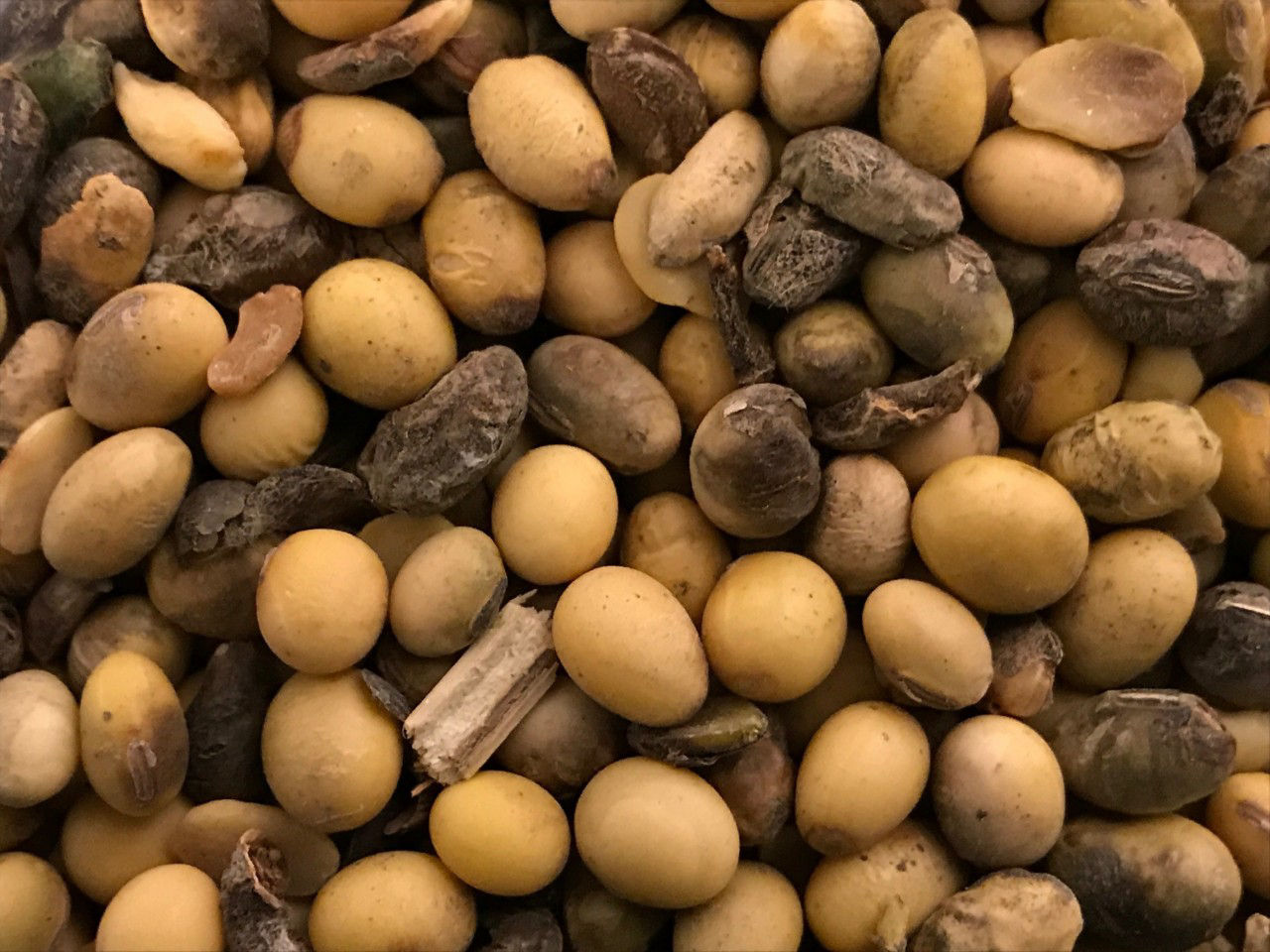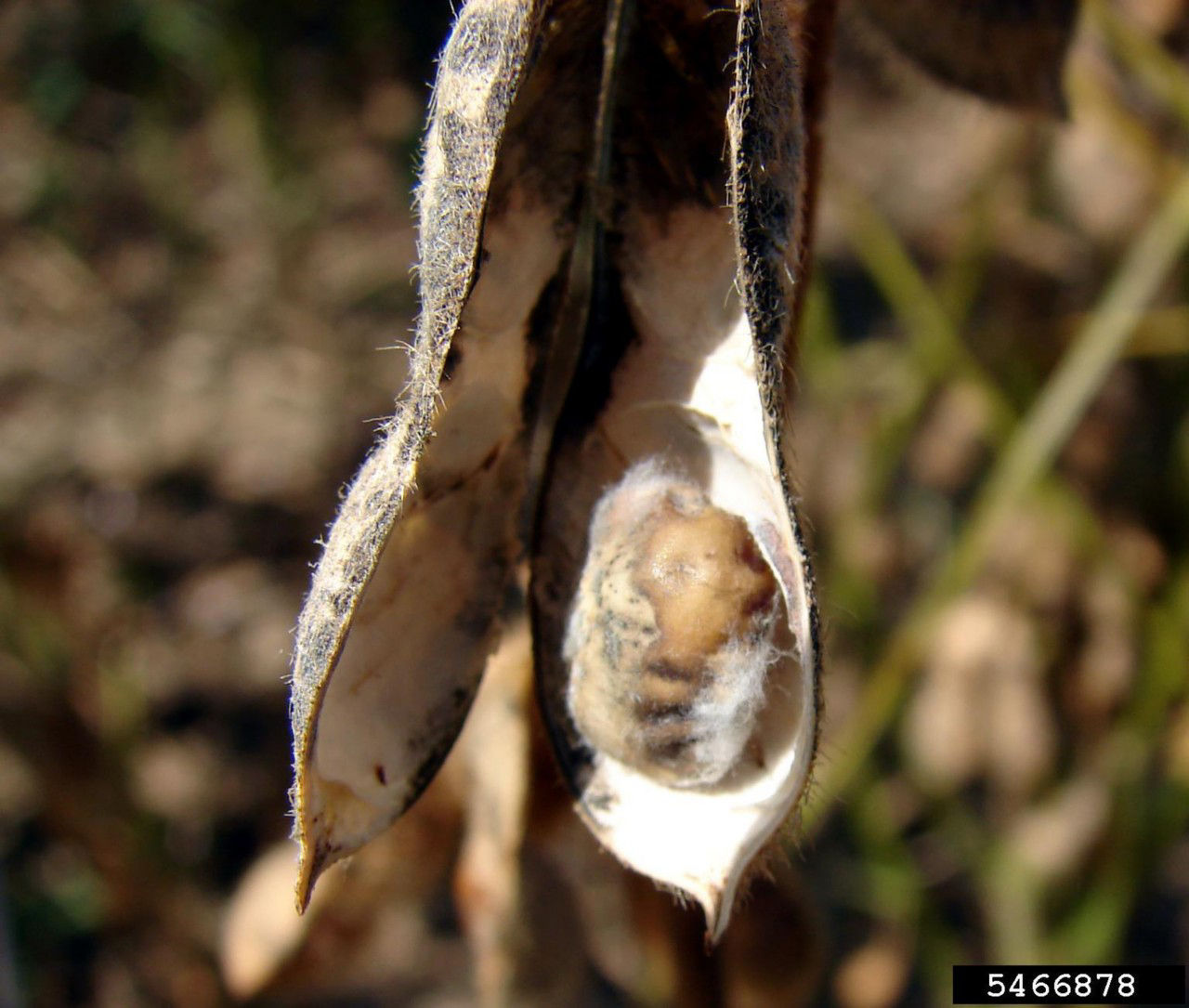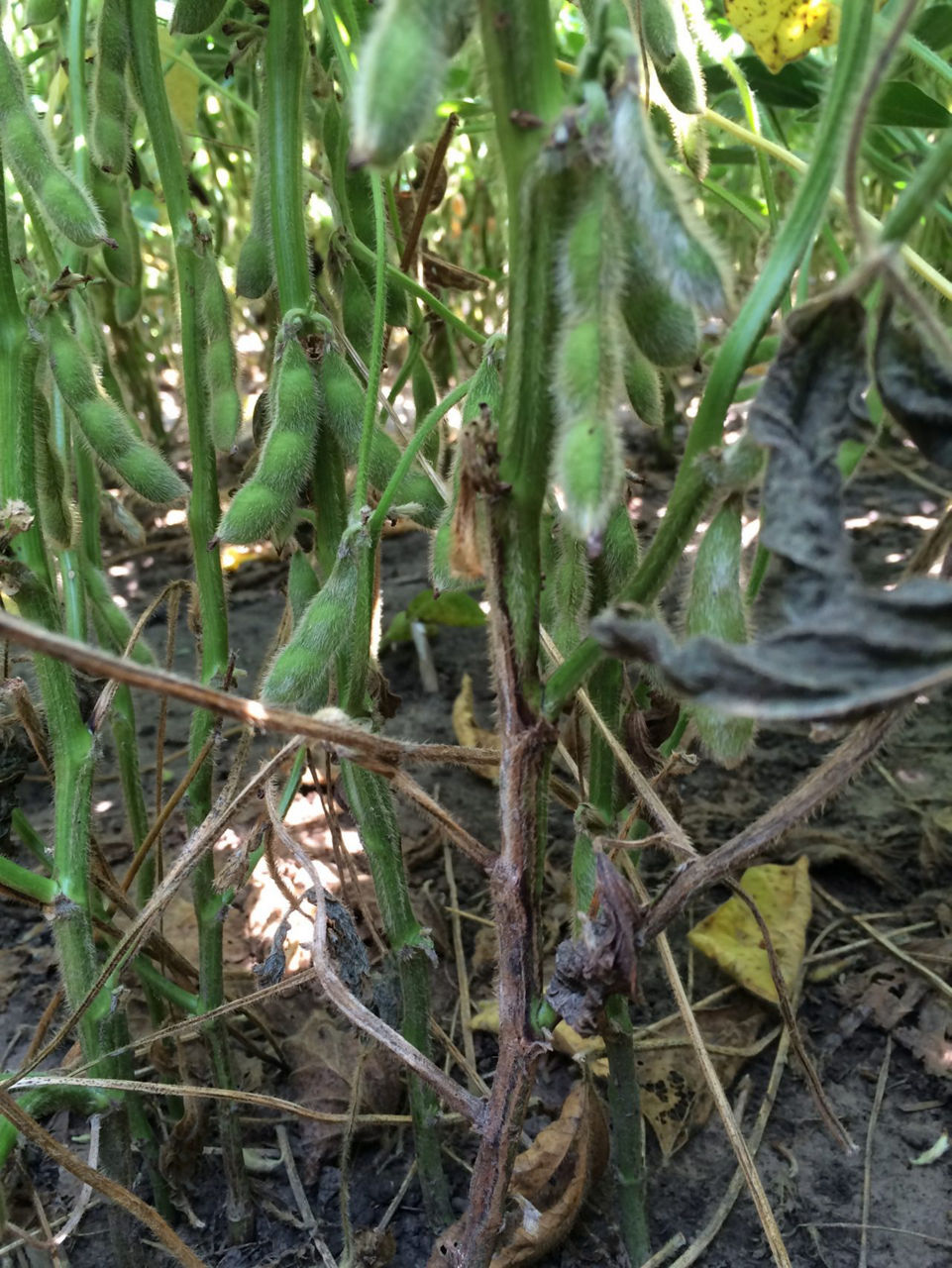5 MIN READ
Diaporthe Diseases of Soybean
October 27, 2021
- Pod and stem blight, Phomopsis seed decay and zone lines, and northern and southern stem canker are four diseases that can impact soybean production.
- Both stem cankers can damage plants throughout the season and result in plant death. Pod and stem blight can impact maturing plants and result in premature death. Phomopsis seed decay can greatly impact yield by affecting seed quality (seed decay), while it is unknown what impact the formation of zone lines has on plant health.
- All of these diseases can occur under wet growing conditions
Pod and stem blight (Diaporthe sojae/syn. Phomopsis phaseoli), Phomopsis seed decay and zone lines (Diaporthe longicolla/syn. Phomopsis longicolla), northern stem canker (Diaporthe caulivora), and southern stem canker (Diaporthe aspalathi), are caused by fungi in the genus Diaporthe. These diseases are found in the United States and Canada and all soybean plant parts (roots, stems, petioles, pods, and seeds) are susceptible to infection when growing conditions are conducive for disease development.1
Pod and Stem Blight
The fungus that causes pod and stem blight initially infects the soybean plant early in the growing season without causing symptoms. A characteristic sign of pod and stem blight is linear rows of black specks on mature soybean stems. The specks are flask-shaped fruiting structures of the fungus (pycnidia), that may also be present on dry, poorly developed pods. Mature pods infected with pod and stem blight pycnidia will contain infected seed (Figure 1).

Figure 1. Soybean seeds infected by pod and stem blight.
Phomopsis Seed Decay and Zone Lines
Infected seeds may have a range of visible symptoms from none too severe. Severely infected seeds are shriveled, cracked, and may be partly or completely covered by a whitish mold growth (Figure 2). Phomopsis seed decay can reduce seed test weight and oil content and severely infected seed will not germinate. Healthy appearing seed can harbor fungi beneath the seed coat and infected seeds that are planted can have reduced emergence due to seed rot or seedling blight. Zone lines are compact masses of fungal mycelium (stroma) that are visible when plants mature or die prematurely (Figure 3). Stroma can persist in soybean debris and provide inoculum for future soybean planting. It is currently unknown what impact development of these structures have on yield.

Figure 2. Soybean seeds infected by Phomopsis seed decay. Photo courtesy of Daren Mueller Iowa State University, Bugwood.org.

Figure 3. Dark zone lines in the longitudinal section of the lower stem are an indicator of Diaporthe fungal infection.
Northern and Southern Stem Canker
Northern and southern stem canker are common throughout NA with northern typically found in Canada. Early symptoms of stem canker include reddish-brown lesions that appear at the base of branches or leaf petioles. These small lesions can develop into elongated, sunken, dark brown cankers that spread up and down the stem (Figure 4). Tiny black dots called perithecia (spore producing fungal structures) may appear on the stem singly or in clustered groups on plants killed by stem canker. Plant parts above the lesions may die. Reddish-brown discoloration may also occur inside the stem, and pods can abort. Leaves may develop necrosis and chlorosis between the veins and may remain attached after death.2

Figure 4. Stem canker in soybeans caused by the fungus Diaporthe.
Disease Cycle
The fungi that cause Phomopsis seed decay and zone lines, pod and stem blight, and both stem cankers overwinter in soybean residue and infected seed. In the spring, spores ooze from the pycnidia are splashed by rain onto the plants where they infect stems and developing pods. The disease is favored by wet, warm, and humid weather when soybean plants are maturing. Seed infection occurs only if pods become infected. Pod infection can occur from flowering onwards but most seed infection occurs after the yellow pod stage (R7). Seed infection tends to be more severe when harvest is delayed.
Disease Management
- Soybean Product Selection: Soybean products can differ in resistance so select products with the best resistance package.
- Seed Selection: Use high quality, fungicide-treated seed.
- Crop Rotation and Tillage: Rotate soybean with non-hosts such as corn or wheat. Tillage can help by burying residue and promoting decay of pathogen-infected residue.
- Fungicide Treatments: Foliar fungicide applications for pod and stem blight between R3 (beginning pod) and R5 (beginning seed) may help reduce stem and seed infection especially in seed production fields. Although fungicide applications may reduce disease and improve seed quality, yield may not be affected.
- Timely Harvest: Harvest when seed reaches 13 to 16% moisture regardless of stem conditions. Delaying harvest can result in higher disease occurrence, especially with warm and wet growing conditions.3
For additional agronomic information, please contact your local seed representative.
Sources
1 Mueller, D., Bradley, C., Chilvers, M., Giesler, L., Mathew, F., Smith, D., and Wise, K. 2015. Pod and stem blight and Phomopsis seed decay. Crop Protection Network. Soybean Disease Management CPN-1007. https://cropprotectionnetwork.org/resources/publications/pod-and-stem-blight-and-phomopsis-seed-decay
2 Malvick, D. 2018. Stem canker on soybean. Soybean Pest Management. University of Minnesota Extension. https://extension.umn.edu/pest-management/stem-canker-soybean.
3 Phomopsis seed rot, pod and stem blight. Ohio State University Soybean Diseases. The Ohio State University. https://u.osu.edu/osusoybeandisease/stem-diseases/phomopsis-seed-rot-pod-and-stem-blight/extended-version/.
Web sources verified 10/07/21.
6003_S10